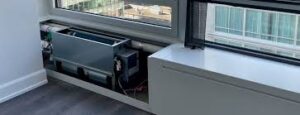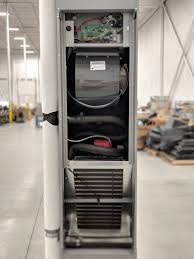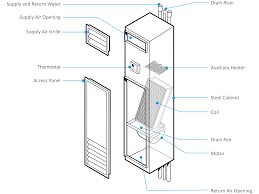 July 2025
July 2025
Fan coil systems deliver heating and cooling to your suite, clean air from outside, and are an integral part of your building HVAC system. At some point, every unit with a fan coil system requires that it be replaced or retrofitted.
The useful lifespan of a fan coil is 20 to 30 years. Maintaining a compromised fan coil system increases the risk of water damage, mould and poorer indoor air quality. Components wear out, become less effective and require replacement. They become less efficient, motor speeds slow down, air flow becomes inconsistent and there can be condensation. Mould, water leaks and deterioration of insulation can compromise the system. This impacts on your air quality and energy efficiency.
Retrofits are certainly cheaper than a system replacement but come with risks. Poorly done, they can be ineffective and a waste of money.
The appropriate size of any fan coil system is based on a unit’s size, exterior insulation and size of each fan coil. It must also reflect the size of a building’s chiller and boiler, its risers and pumps.
Original fan coil specifications may no longer be appropriate. Installing to original design is a risky shortcut requiring assumptions about current equipment and air flow. An undersized system can cause a lack of heating or air conditioning. A single poor quality drain pain can prematurely rust and cause water damage to multiple units in a building. A poor thermal barrier can lead to condensation and drywall damage.
When owners replace fan coil systems at their sole discretion and with no understanding of how their system impacts the entire building, some may seek the cheapest solution available. One community taking this approach, and failing to recommend installers and/or systems, dealt with multiple leaks and heating complaints. Eventually the board undertook an audit that uncovered under and oversized fan coil units and poorer quality systems. The entire building became identified as a fire risk because of an unclear impact of the fan coil units on electrical components.
 To maintain building systems, communities will organize an annual cleaning of fan coil systems to ensure they remain in good working condition. Filters are replaced and identified non-mechanical problems addressed. Where systems are owned by unit owners, the corporation may organize retrofitting or replacement of systems to be paid by those participating. When not organized by the building, and for those choosing not to participate in a building-organized retrofit or replacement, each owner is responsible for maintaining their individual system. Owners failing to maintain a system that causes damage to common areas or other units may be held financially responsible for damage caused by their system.
To maintain building systems, communities will organize an annual cleaning of fan coil systems to ensure they remain in good working condition. Filters are replaced and identified non-mechanical problems addressed. Where systems are owned by unit owners, the corporation may organize retrofitting or replacement of systems to be paid by those participating. When not organized by the building, and for those choosing not to participate in a building-organized retrofit or replacement, each owner is responsible for maintaining their individual system. Owners failing to maintain a system that causes damage to common areas or other units may be held financially responsible for damage caused by their system.







